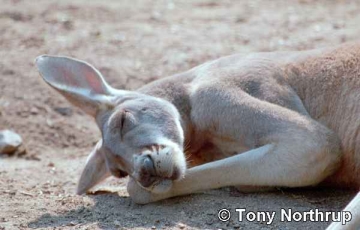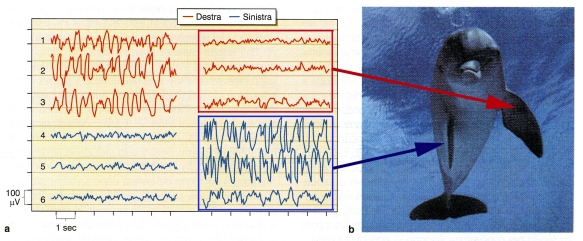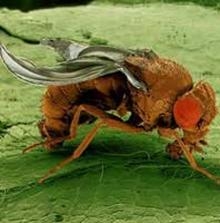Sleep in different animal species
 Fig. 1: Sleeping kangaroo. ((Credit: Tony Northrup, photo gallery) |
Sleep in mammals, including man, does not differ from species to species
in terms of quality. We can even see in birds the cyclical alternating of
periods of
NREM![]() sleep with brief periods of
REM
sleep with brief periods of
REM![]() sleep.
sleep.
There are some particularly interesting differences between the sleep of land mammals and the sleep of acquatic mammals. For example, dolphins and seals can sleep with only half their brain in an acquatic environment. The partial presence of waking activity allows the animals to keep a constant check on their breathing.
 |
Fig. 2: a) Electroencephalogram b) Image of a sleeping dolphin. The left part of the body (horizontal fin, red arrow) is kept active thanks to the waking state of the right side of the brain (tracciato elettroencefalografico desincronizzato in 1, 2 e 3). (Credit: Adapted from: G.Tononi, C.Cirelli. Sonno. In "Fisiologia Medica". Edi. Ermes., 2005.) |
 Fig. 3: Drosophila melanogaster, commonly know as the fruit fly. |
The structure of sleep becomes progressively less complex as we move down the zoological scale, until it is reduced to the simple alternation of periods of activity and rest, as recently observed in flies (Fig. 3).
The Webweavers: Last modified Mon, 6 Feb 2006 11:09:45 GMT